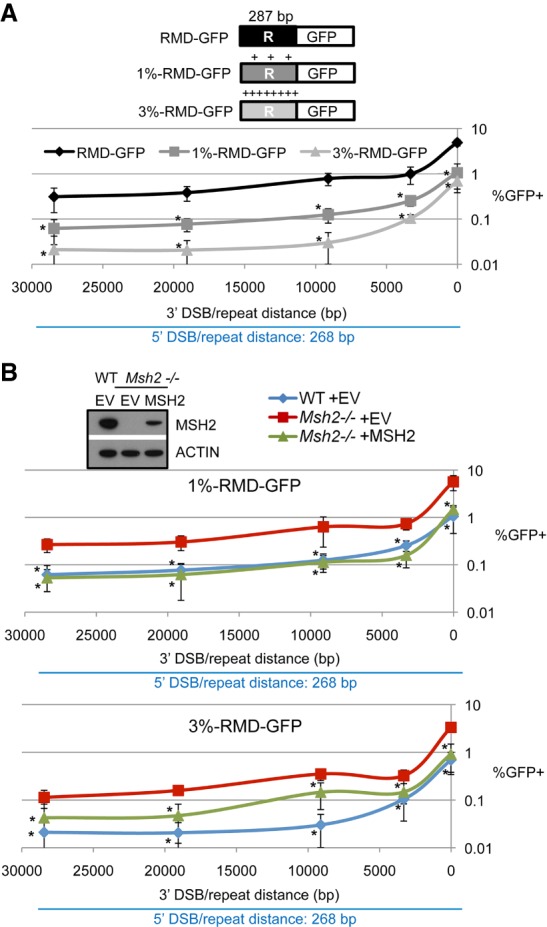Figure 6.

Introducing sequence divergence between the repeats substantially suppresses RMD in a manner dependent on the mismatch repair factor MSH2. (A) Introducing sequence divergence between the repeats markedly suppresses RMD frequency at multiple DSB/repeat distances. Shown are variants of the RMD-GFP reporter: 1% RMD-GFP and 3% RMD-GFP, with three and eight mutations, respectively, which are equally dispersed in the 3′ repeat (R) fused to GFP and do not affect the respective codon in the repeat (i.e., are silent mutations). Each reporter was integrated into wild-type mESCs and transfected with the respective sgRNA/Cas9 pairs shown in Figure 1A. Shown is the frequency of GFP+ cells normalized to transfection efficiency for these experiments. n = 15 for RMD-GFP. n = 6 from Figure 4A, with additional replicates performed later with the divergent reporter cell lines; n = 9 for 1% RMD-GFP and 3% RMD-GFP. Error bars indicate SD. (*) P = 0.0001 comparisons versus RMD-GFP using one-way ANOVA with Dunnett's test. (B) Loss of MSH2 increases the frequency of RMDs between divergent repeats. Msh2−/− mESCs with the 1% and 3% reporters shown in A were transfected with the respective sgRNA/Cas9 expression vectors along with a control EV or MSH2 complementation vector. Shown are the percentages of GFP+ frequencies normalized to transfection efficiency along with the wild-type frequencies from A. n = 9. Error bars indicate SD. (*) P ≤ 0.001 comparisons versus Msh2−/− EV using one-way ANOVA with Dunnett's test. Also shown is immunoblot analysis confirming MSH2 expression.
